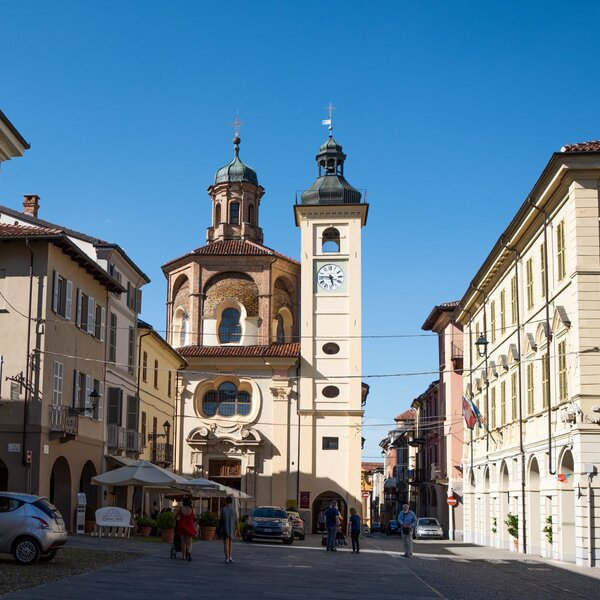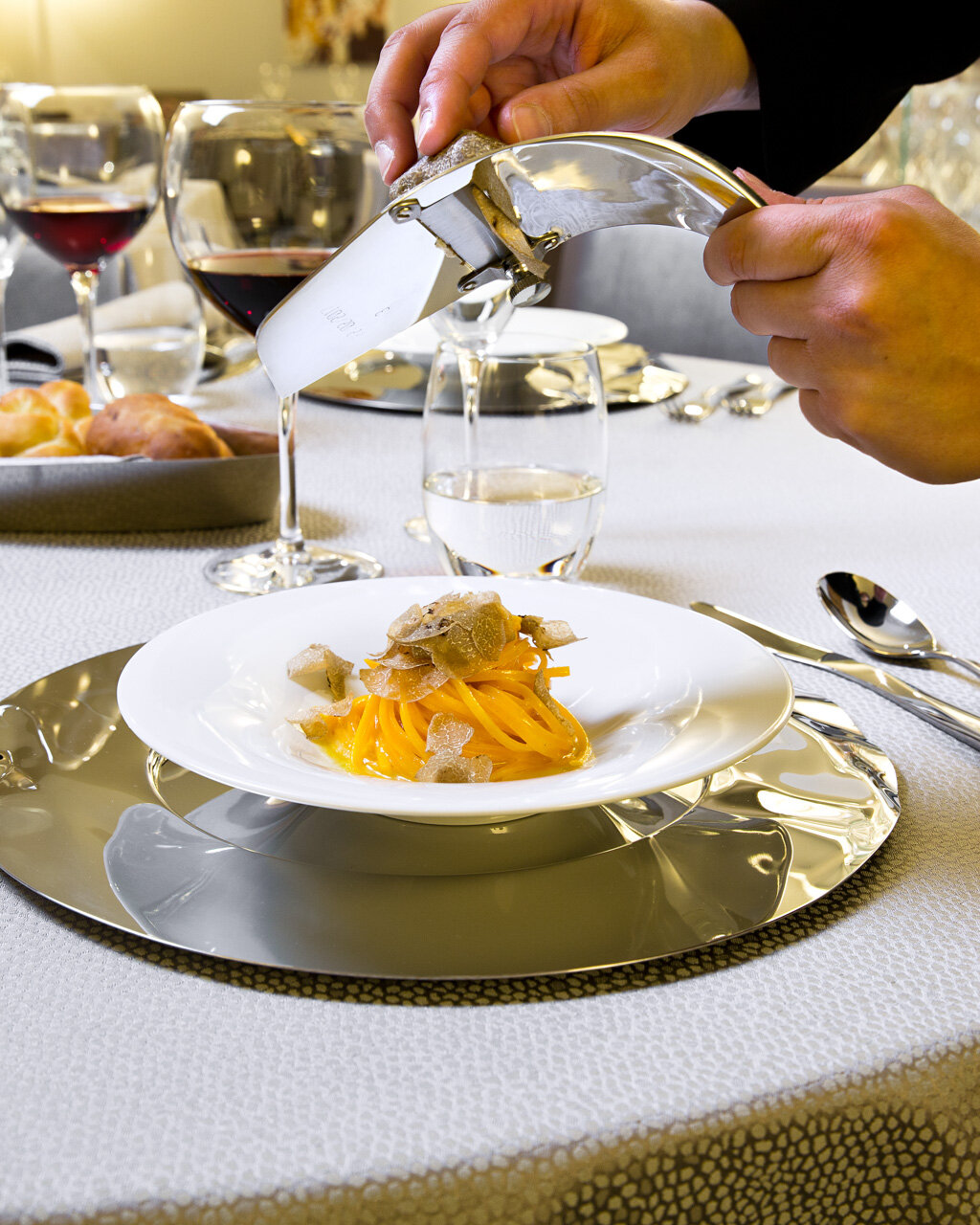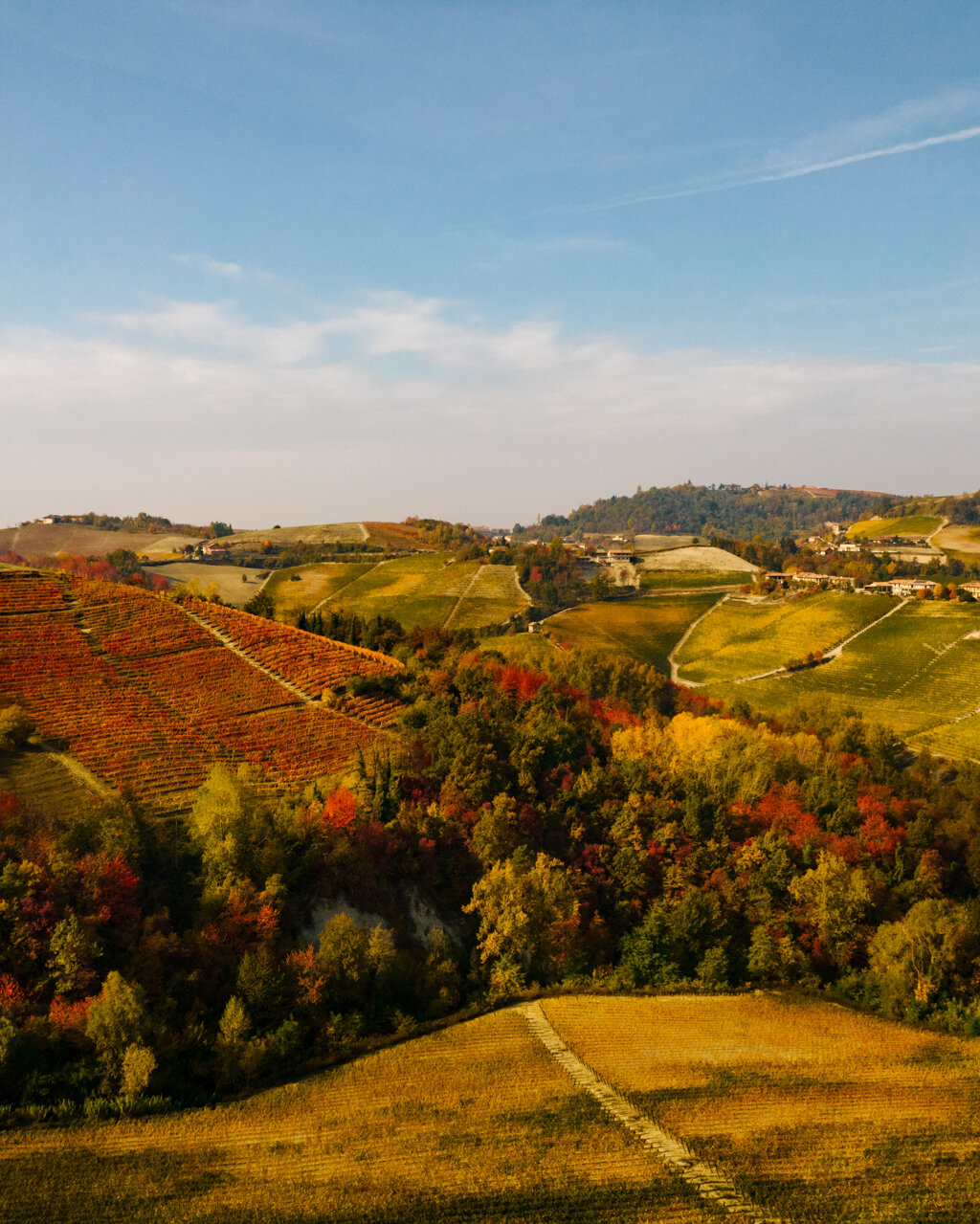“Ever since I was a boy and leaned on my shovel at the gate of the Mora and listened to the chatter of the idlers passing by on the main road, the hills of Canelli have been the gateway to the world for me.”
Cesare Pavese - (from “La luna e i falò” - The moon and the bonfires)
Past and present are always in the balance, between ancient traces and modern constructions. Here, history mentions archaic presences: the Celts, Ligurians, Romans, Saracens, Lombards, Spaniards, French. They all passed through this valley, where perhaps 2000 years ago Moscato was already being cultivated (a vine that, it is worth remembering, is called Moscato Bianco di Canelli). Testimonies of the past must be sought in the old streets, walking around to uncover memories and unexpected sensations. Sometimes it is the ploughshare that reveals glimpses of history, with shards and pottery, sculpted stones and ancient burials... like the funerary steles and Roman gravestones that today are part of a small, exciting lapidary in the Church of San Rocco.
Find out more

San Damiano d'Asti, a chessboard on the Borbore
Find out moreAlso of Roman origin is the baptismal font in the 17th century parish Church of San Tommaso, built on an ancient place of worship at the foot of the hill and worth a visit because of the countless works of art it houses. The historic part of the town, curiously known as "Villanova", is all built along the "sternìa", the steep cobbled road that climbs from below up to the castle; it should be walked without haste, enjoying the view in the distance. The small Square of San Tommaso is very scenic, with the baroque ex-Confraternity of the Annunziata (now an Orthodox temple) acting as a backdrop to the climb up the steep cobbled Via Villanuova, which meanders through the old village, nestled in narrow bends between terraced vegetable gardens, dry stone walls and stone houses.
So, as we climb up bend after bend, we reach Piazza San Leonardo, almost on top of the hill, with its breathtaking Belvedere and the homonymous church, opposite the aforementioned San Rocco (1721), a small Confraternity built after a plague, an example of light Baroque where the Langa stone blends with the red brick of the decorations, in a suggestive chromatic balance. Once you are in San Leonardo, in the side chapels, you should not miss the numerous works of art by Aliberti, the ingenious "machine" by Bonzanigo for the procession of the statue of the “Madonna del Rosario” and, above all, the refined decorations of the vault, the best example of baroque in Asti, by Carlo Gorzio.
The gentle structure of the Gancia Castle (once Scarampi-Crivelli, now owned by the Gancia family) overlooks the town. The castle has been remodelled, destroyed and rebuilt over the centuries, from a Roman fortified stronghold to a mediaeval fiefdom and now a villa. The castle is not accessible because it is private, but it boasts an Italian garden, charming alleys, outbuildings and walls that can be seen on special occasions.
Find out more

Nizza, amidst Barbera and Bagna Cauda
Find out moreThe vineyards begin behind the castle, towards the panoramic hamlet of Sant'Antonio, which produce the best Moscato, because they are exposed to the strong midday sun. A small road runs along the hillside in a unique vineyard setting up to the enigmatic Torre dei Contini (Contini Tower) that stands out in the wind to mark the ancient boundaries of the town. The surrounding hills are described in the Langa of Moscato itinerary.
From the Square of San Leonardo we climb the last stretch of Via Villanuova up to the painted decorations of the old toll station (dazio comunale - communal duty) and then descend slightly to the left into the alleyway of Costa Belvedere to soon reach a secluded and breathtaking panoramic balcony over the Belbo valley.
From the terrace, you can descend down the stairs that run between the properties. The stairs end next to the small Church of San Giuseppe: from the hairpin bend below (gir d'la mòla), turn onto Via Pietro Micca (known here by everyone as ij piagg - the tolls), another steep flight of steps/alley that crosses houses and courtyards to arrive under the large archway (once a customs gate) of Via Rosmini. From here, we continue downhill along the street to reach shortly afterwards Via Massimo D'Azeglio (known as 'l gir d'la sparzera'), which runs alongside the historic Palazzo Anfossi, seat of the Town Hall since 1919, and opens onto Via Roma right in front of what was once the old Teatro Cinema Balbo, whose restored façade still survives on a building now clearly used for other purposes. From Via Roma we turn right and shortly return to Piazza Cavour.
Find out more

Moncalvo, Italy's smallest town
Find out moreAlso on Via Giuliani is the beautiful homonymous building, which houses the Enoteca Regionale di Canelli e dell'Astesana (Regional Wine Centre of Canelli and Astesana) and the tourist office. At the far end of the courtyard, in the rooms originally used by the Regional Enoteca and now housing a restaurant, there is a beautiful mural by Antonio Catalano, a gifted genius from the Asti area.
The Cathedrals are labyrinthic tunnels dug into the hillside to naturally ensure the humidity and temperature conditions that are necessary for sparkling wines. A visit to one (or rather all) of these wineries allows you not only to take a journey into the history of Piedmontese oenology (among pupitres and crown corks) and to become an expert in often obscure French techniques and appellations (millesimé, pas dosé, brut, etc), but, above all, to discover another Canelli, all secret and hidden, almost a journey through the looking glass towards the centre of the Earth.
"I realized then that everything had changed. I liked Canelli for itself, like the valley and the hills and the banks that emerged from it. I liked it because everything ended here, because it was the last village where the seasons, not the years, come and go".
(from The Moon and the Bonfires)
Text by Pietro Giovannini
Find out more

The “secret” treasures of Cherasco
Find out more
Canelli, the "Gateway to the World"
Find out more
Dogliani, in-between leisure and shops
Find out morePLEASE NOTE: Responsibility for the maintenance and practicability of the various trails lies with the municipalities where the routes are located. The Tourist Board, therefore, cannot be held responsible for any inefficiencies, but is willingly available to collect your reports so that they can be forwarded to the authorities concerned.




